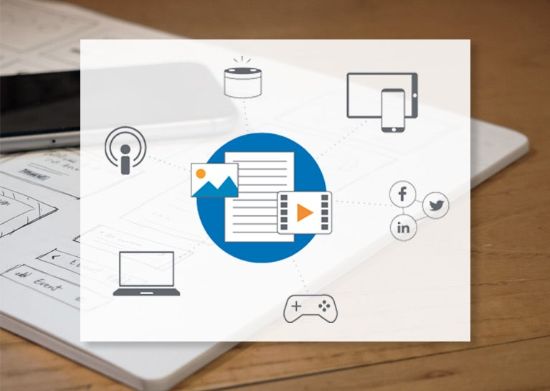
Welcome back! In Part 1 of this post, we posed perhaps the most important question in project definition and estimation: Why? It is certainly not the only question that needs to be answered up front, but having a solid Why, makes it significantly easier for us to help determine the How. In Part 2 of this blog, we will take a deeper dive into the other important questions and answers to have at the ready, which will [usually] empower clients to have more control in reducing budget.
ANSWERING THE RIGHT QUESTIONS
Every client, and every request is different. It is impossible for us to provide a comprehensive list of questions that will encompass every variation and possibility to accurately estimate every request we receive. Some collaboration between teams is necessary, but I have come up with a preliminary list of questions that if answered completely, should provide a pretty comprehensive baseline from which our team can begin. Please keep in mind that this is not the end-all, be-all list, but having answers to these questions when logging tickets, or sending new project requests, will help put our technology team in the best possible position to move forward in the most streamlined fashion.
Logging Tickets for Issues or Edits:
- Does our team already have credentials and access to begin digging into this work? If not, who needs to coordinate that access?
- Does our team need to coordinate with any internal partners to begin this work, or when this work is complete, push it to production? If so, who are the internal partners with whom to collaborate?
- What/why is this an issue or edit?
- What is the URL or page(s) that the issue or edit affects?
- Can you document the steps to recreate the issue?
- Are you able to provide screenshots?
- Is it browser/device specific?
- What is the priority of this work?
- Which environment should we be referencing? (Dev, Stage, Production… or all?)

New Work or New Project Requests:
- Is your internal team aligned on this project or request, and do you have all of the necessary details, assets and internal signoffs complete? (If the answer is no, definitely give us a heads up that this work may be coming, but wait until you are finalized internally before really looping in our team.)
- Does our team have all of the proper credentials and access to the appropriate environments, databases, etc.? If not, who needs to coordinate that access?
- Does our team need to coordinate with any internal partners to begin this work, or when this work is complete, push it to production? If so, who are the internal partners with whom to collaborate?
- Who are the key contributors/collaborators/points of contact through which to run questions and approvals?
- Who will be using this, or who will this work impact?
- What is the project or request? (In as much detail as can be provided!)
- What is the expected result or measure of success for this request?
- When do you need this work to be completed?
- Why? What is the goal you are trying to achieve with this work?

WHICH W IS THE MOST IMPORTANT W?
As discussed in Part 1, there will certainly be times when you are unable to provide all of these details up front, especially for new projects. But for the planning stages, if you can provide the Why of your request first, it will allow us as your technology partner to determine if your goals might be achieved in a different, better, more cost-effective way.
As the old adage goes, you get what you pay for, and sometimes the cheapest option is not always the best option. Is it our responsibility to provide the most cost effective solution? Absolutely, however sometimes due to flaws in inherited code or the way sites are implemented, “easy” fixes are not always as simple as they first appear to be.

THIS IS HOW WE DO IT
For example, our BlueModus team has several existing clients with minimal technology budgets, whose sites contain known architectural and/or structural issues. We work closely with these clients to continually prioritize the show-stoppers, the need-to-haves, and the nice-to-haves. This is sincerely a collaborative business, and that is how we approach each client and project.
Although we truly give it our best effort to provide accurate and reasonable estimates for work requested, as Alexander Pope once said, “To err is human…” Occasionally, our team may misjudge the level of effort necessary, and discussions around requirements and budgets may need to be revisited as we move forward. Unfortunately, it is the nature of this business, and sometimes unavoidable.
WE WISH IT WERE ALWAYS EASY.
Despite the many plastic Staples “Easy” buttons we have placed around the office, none of them actually work. There are, and will always be, unforeseen issues that arise as development work progresses. We do our best to avoid them, but that is why they are called unforeseen issues.
That said, it is never our intention to deceive or misguide our clients into agreeing to higher numbers. We consider ourselves to be true partners, and as partners, we try our best to provide clients with the honesty and transparency required to build a strong and mutually exclusive working relationship, so that we can continue to work together synergistically going forward.

IT COMES DOWN TO THIS…
I could continue to regale you with the ideology and brand positioning of BlueModus, but what it boils down to is this: If you want to reduce your budget, don't get in your own way. Come prepared, ask the right questions up front, and trust that our team is not disingenuous, and will act with your best interests in mind.
The BlueModus team has, and will continue to do everything in our power to provide the level of quality and service you expect and deserve. We do it because we are passionate about our work, and the relationships we have built. (I mean we also kind of have to do it to keep the lights on, but it is mostly because we love it. Mostly.)
The TL;DR moral of the story is that there is no one guaranteed way to reduce your budget in each and every instance. That said, the stronger the level of detail provided up front, and the more effectively we are able to communicate, the better the chance that each engagement will get us more quickly in sync, and into a rhythm to build a stronger, and more efficient partnership reducing spin, and thus reducing budget.

Ready to start building a successful partnership with BlueModus? Contact us today!










